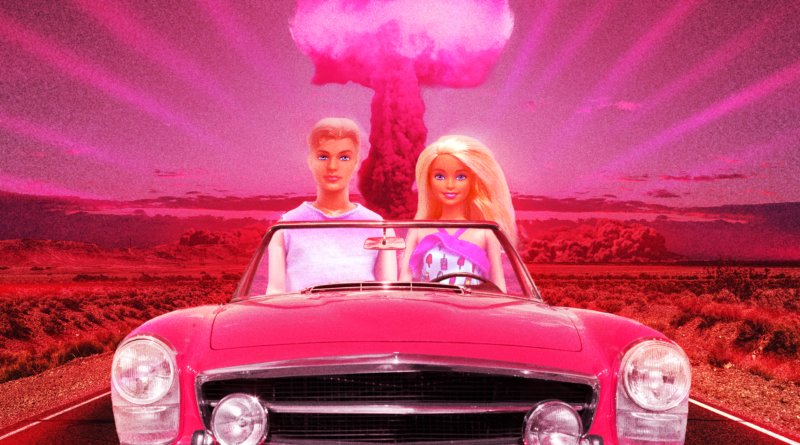Barbenheimer shocker: What ‘Barbie’ and ‘Oppenheimer’ have in common
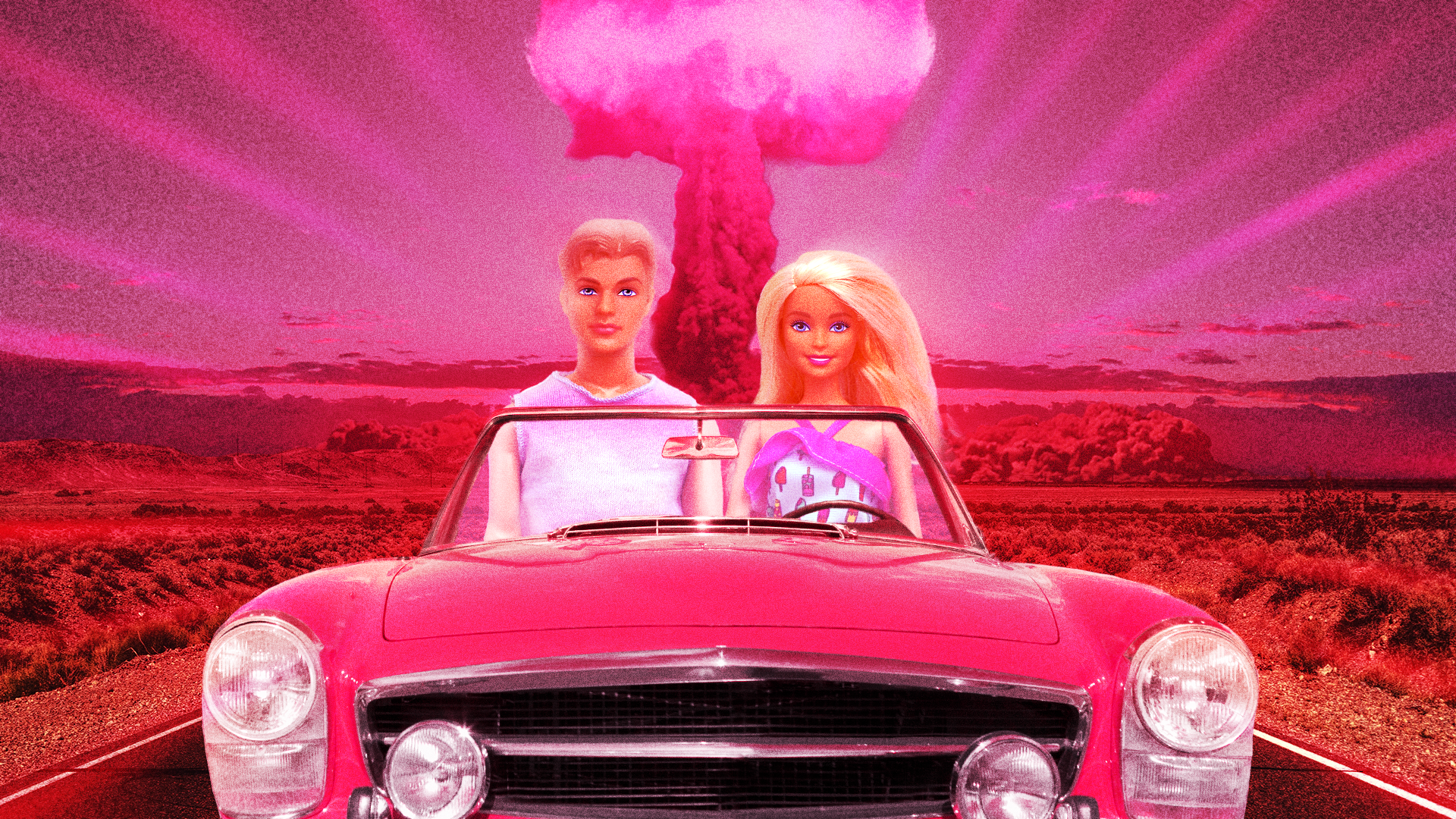
For months, the internet has been utterly obsessed with Barbenheimer. The face-off between Greta Gerwig’s violently pink Barbie and Christopher Nolan’s tensely grim Oppenheimer has inspired memes and double-feature plans and a rivalry between fandoms, where these interests do not cross over. But now that we’ve seen both films, we can tell you what Barbie and Oppenheimer have in common.
Honestly, you might be shocked. It’s more than even the memes could dream.
Barbie and Oppenheimer: A complicated look at a historical figure
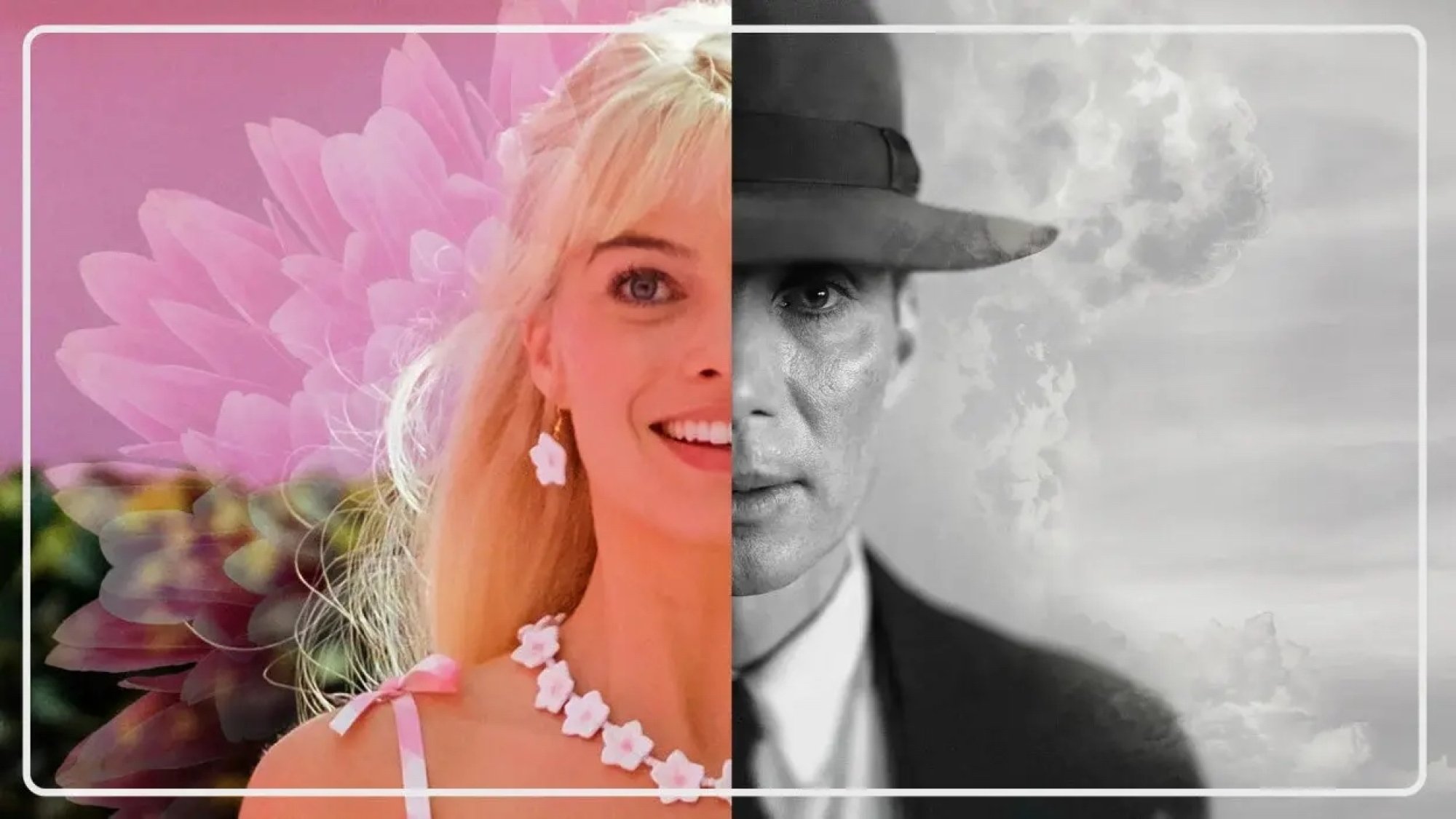
One of these movies takes a messy but mesmerizing look at a controversial invention that changed the world irrevocably. The other is Oppenheimer. All kidding aside, these titular heroes aren’t all that different.
In Oppenheimer, writer/director Christopher Nolan unpacks the life and legacy of J. Robert Oppenheimer (played by Cillian Murphy), father of the atomic bomb, by following three separate times. The first is Oppenheimer’s path to the bomb’s creation. The second is a reputation-scorching tribunal the scientist endured in 1954, where his every choice and affiliation was called into question. The third is a presidential cabinet confirmation hearing, in which the legacy of Oppenheimer became a fearsome focal point. Altogether, Nolan uses these threads to explore the physicist’s ambition, his hopes, and his regret over creating something he couldn’t ultimately control.
In Barbie, co-writer/director Greta Gerwig tackles all things Barbie by following her eponymous heroine (played by Margot Robbie) across three curious terrains. The first is Barbieland, a Barbie-run utopia where girls can do anything, Kens beach, and everything is pink — even the White House.
Everything there is perfect until Stereotypical Barbie (Margot Robbie) can’t stop thinking about dying. In the Real World, she seeks answers, but there she encounters new obstacles like anxiety, crying, and the patriarchy. In the third act, she returns to Barbieland, but it’s not the place she left. Like Oppenheimer, she is tasked with not only defending herself against those who would undo everything she believes in, but she also has to confront her regret, find new hope, and cling to her ambition for a better future.
Barbie and Oppenheimer: Existential dread
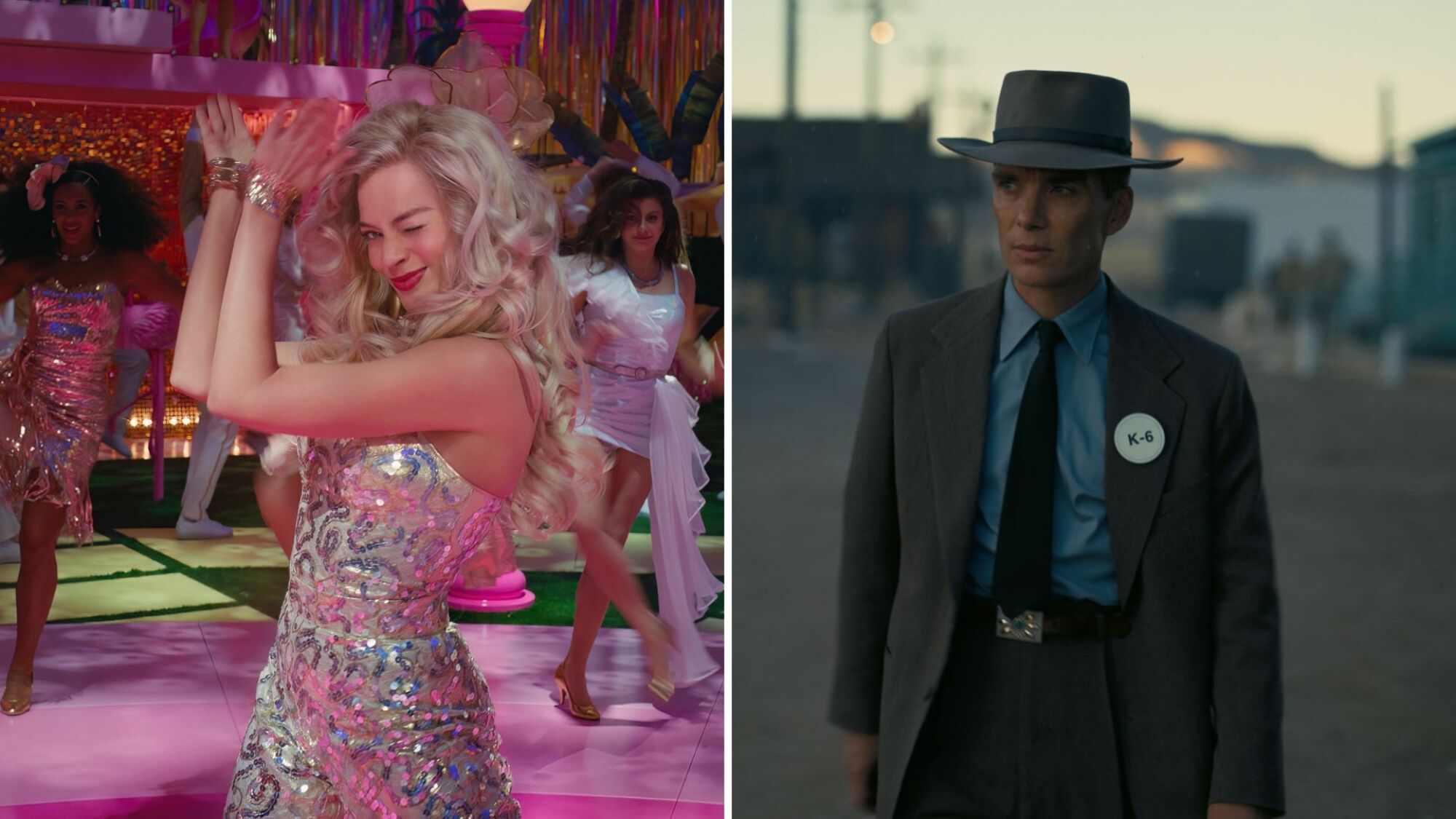
The internet went wild when a Barbie trailer dropped that featured the peppy protagonist asking, “Do you guys ever think about dying?” — and mid-disco dance number no less! Irrepressible Thoughts of Death Barbie was not a doll we imagined might pop up in Gerwig’s vision of Barbieland, and incredibly, it’s not an isolated gag. Amid a wacky adventure, Barbie is tasked with coming to grips with human mortality and her place within it. An idea may live forever, but what does that mean for a Barbie who’s becoming more and more human?
In Oppenheimer, death is a possibility that looms large over the entire film, be it the scientist and his colleagues reflecting on the genocide being carried out by Adolf Hitler in the World War II timeline, the devastating impact their deterrent bomb could (and would) have on the Japanese people, or how death is a ticking clock that taunts Oppenheimer as he strives to urge America away from nuclear proliferation. He never gets to dance out his feelings about it though.
Barbie and Oppenheimer: Horses (and patriarchy)
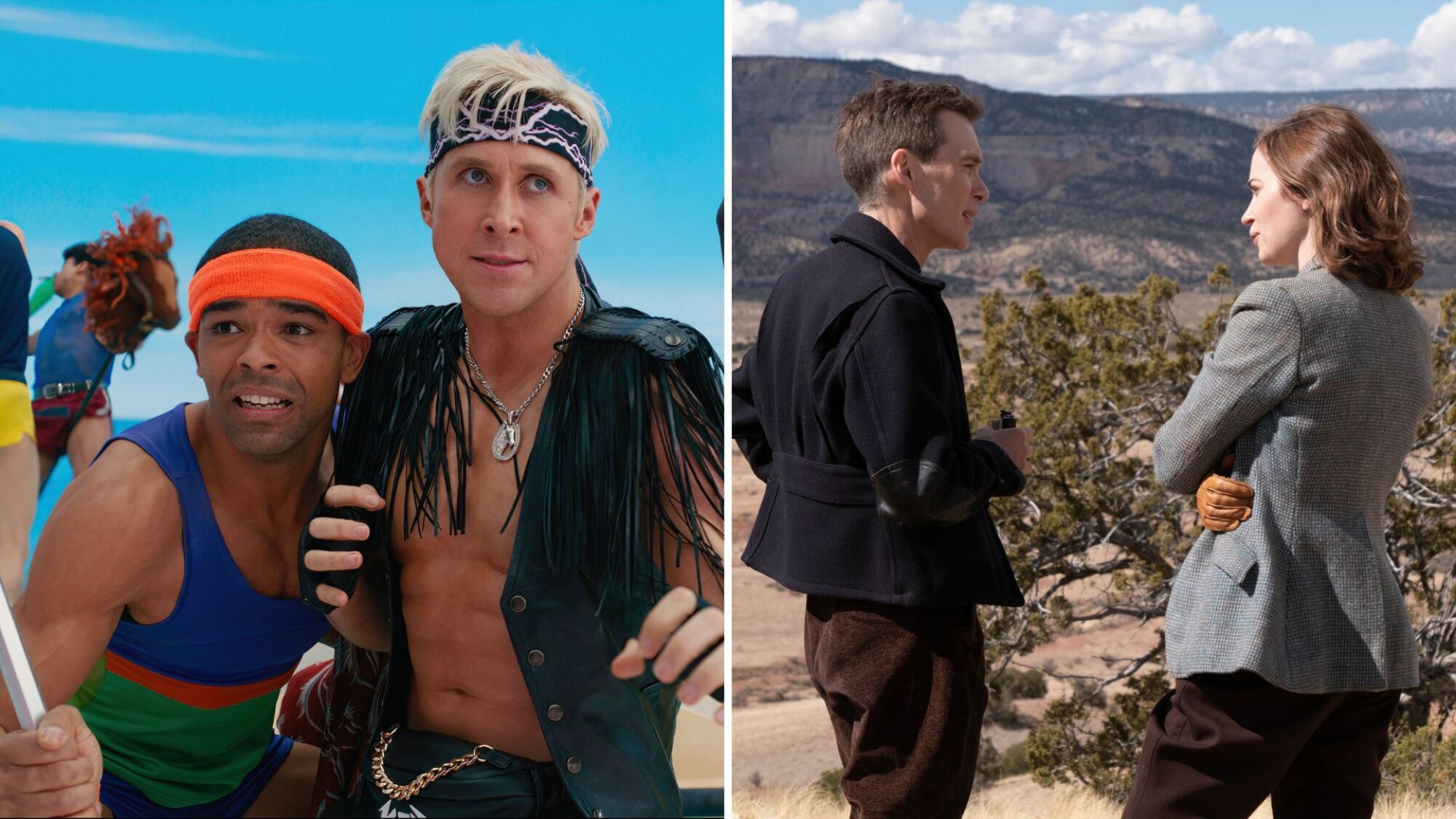
Sure, Barbie the doll has had horseplay sets, but that’s not how they figure into the plot. Instead, once Ken gets a taste of L.A.’s Century City — with its gym bros fist-bumping, dudes wearing long fur coats, and businessmen shushing female colleagues — he decides two things: 1) The patriarchy is just what Barbieland needs, and 2.) Horses are involved.
Kendom (or KendomLand) is reimagined as a Ken utopia, where Kens can be in charge, even if they have no qualifications, like an education, job experience, or swim lessons. All they need is Brewski beers, unhinged egos, and horses on their TVs, home accessories, fashion accessories, and on their version of Mount Rushmore. After all, as Ken explains to a captive audience of Kens and brainwashed Barbies, horses are men-extenders.
In Oppenheimer, this is also kind of true! Los Alamos is the New Mexico-set hub of operations for the Manhattan Project, which developed nuclear weapons under Oppenheimer’s leadership. A desert community built specifically for this major government operation, Los Alamos is a solid setting for Oppenheimer to relish in his Horse Girl interests. However, his equestrian side also plays a part in seducing his colleague’s wife-turned-his-wife Kitty (Emily Blunt).
In neither case can horses be blamed for these men’s (and Kens’) poor choices.
Barbie and Oppenheimer: Men
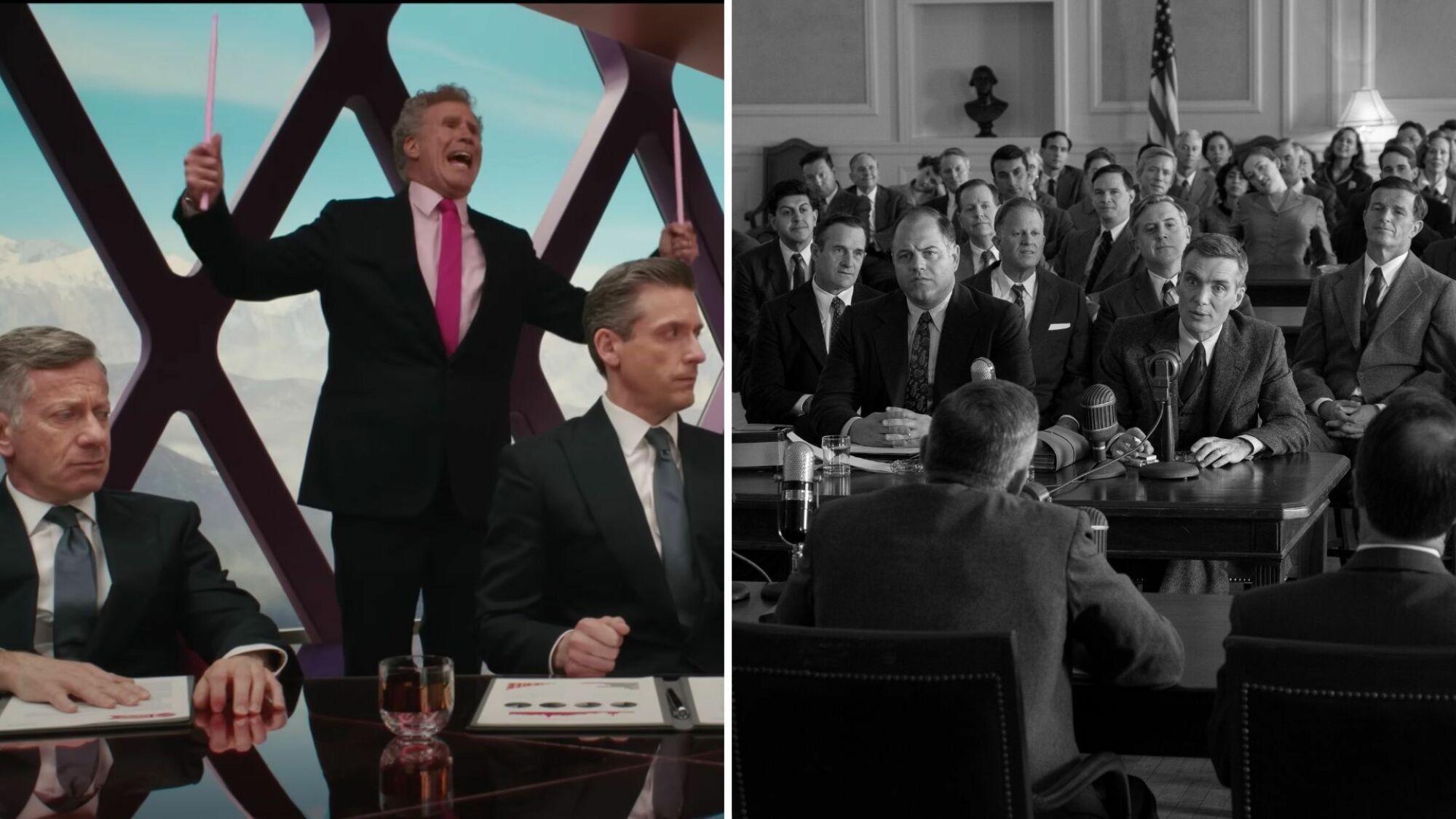
Men in power. Men in board rooms. Men in hats. Both movies have all three.
In Oppenheimer, the trident of timelines includes lots of somber white men discussing science, politics, and personal grudges in board rooms and classrooms, while Barbie has Will Ferrell as the CEO of Mattel, flanked by cartoonish Yes men, all wearing dull business suits.
The Kendom is more inclusive, including Kens played by Ryan Gosling, Simu Liu, Ncuti Gatwa, and Kingsley Ben-Adir, who plays a Ken who — like Oppenheimer — appreciates a good hat as a style accessory. (“I have hats!” Yeah, you do, bud.)
Barbie and Oppenheimer: Style icons?
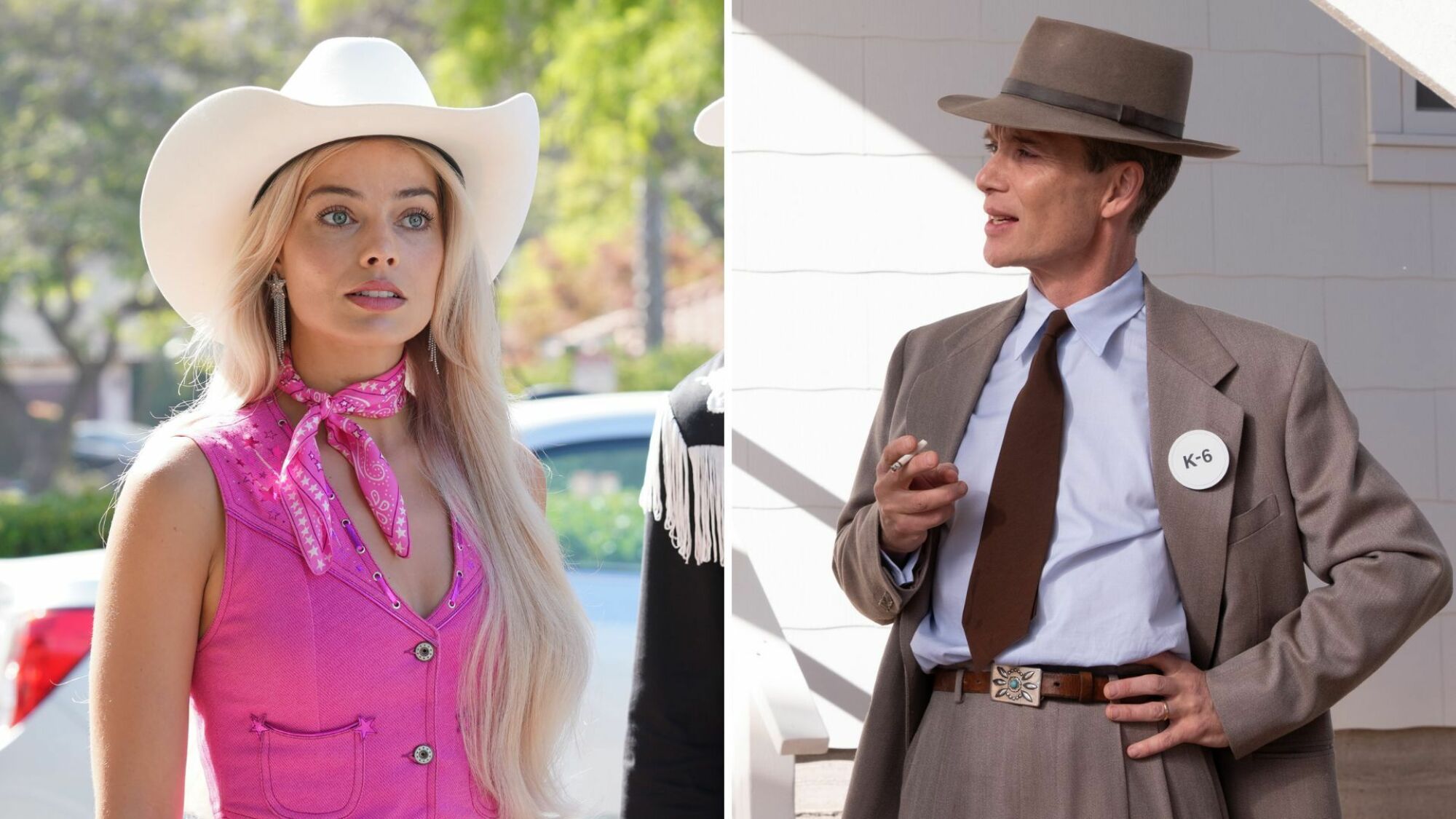
You don’t need to look any further than Instagram or your local movie theater to see what an impression Barbie is having on this fashion moment. Barbiecore has risen. The vibrant pink that’s been her brand for ages is everywhere, with plenty of fans emulating Barbie’s fashion sense.
In Barbie, Barbie wears a slew of sensational outfits that are unapologetically high femme, though she and Oppenheimer share a love for a good wide-brim hat. And that’s not all. While Oppenheimer isn’t as bold in its wardrobe aesthetic, there is a scene where Nolan suggests the titular scientist put real thought into what his look would be.
At Los Alamos, there’s one sequence where Oppy dresses in a soldier’s uniform, likely to make a good impression on the military brass who cringe at his associations with known communists. But his pal and colleague Isidor Rabi (David Krumholtz) has a heart-to-heart with him, telling Oppy — essentially — to be true to himself. Promptly, Oppenheimer suits up in the look that’s all over the posters and promos: gray suit, high-waisted pants, wide-brim hat, and a turquoise belt buckle. After all, one does want a hint of color.
Barbie and Oppenheimer: Mermaids
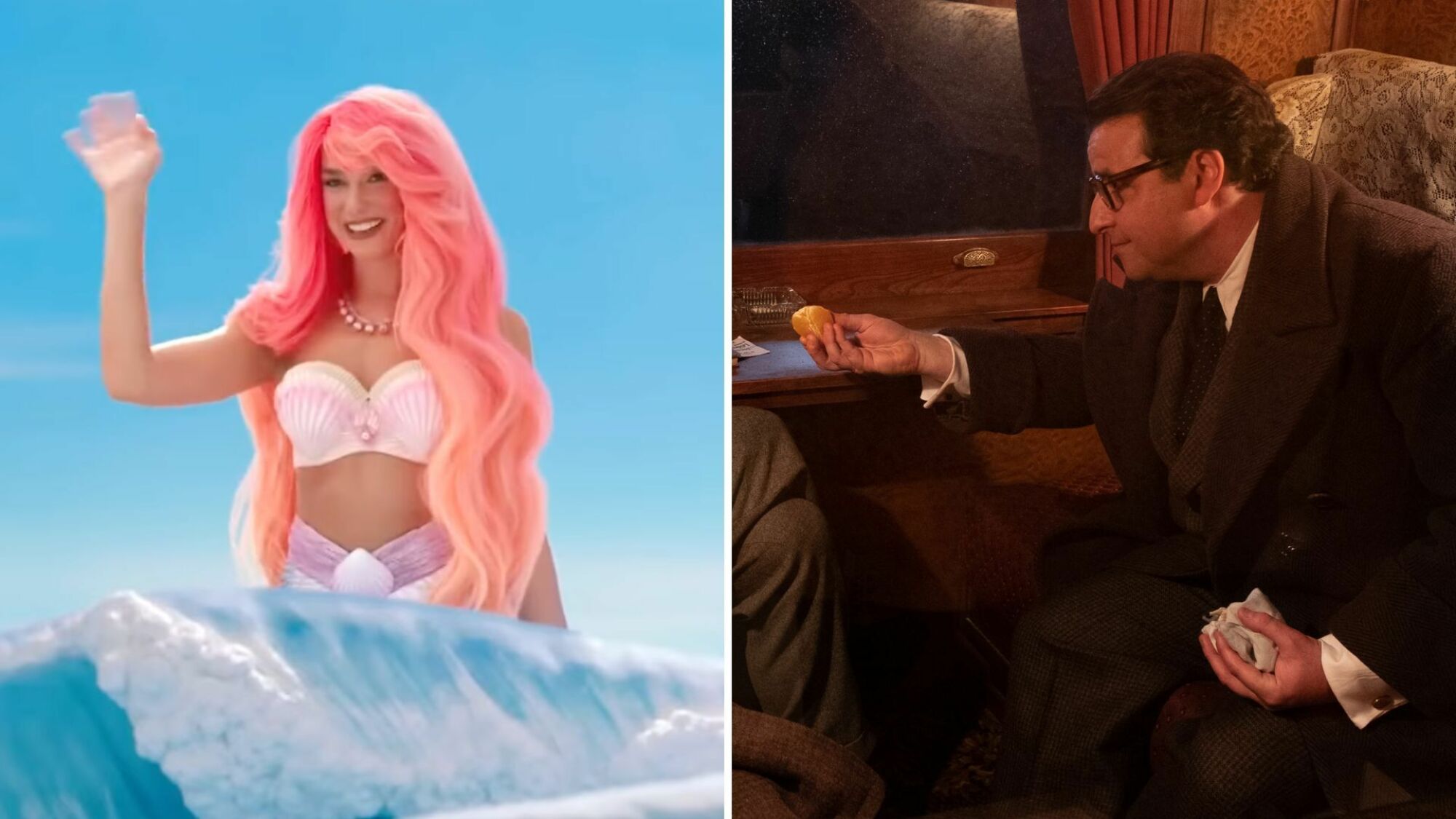
Yup, mermaids. In Barbieland, this one’s pretty obvious. As teased in character posters and promo videos, Dua Lipa plays Mermaid Barbie(s). And later, John Cena pops up as her merman Ken. Meanwhile, in Oppenheimer, mermaids get brought up in a tense exchange in defense of Oppy.
When Rabi is defending his friend to the security hearings board, he stands by their work as at Los Alamos, saying, “We have an A-bomb and a whole series of it, and what more do you want, mermaids?”
Like many of the more memorable lines in Oppenheimer, this is a direct quote intended to accurately capture the people behind the atomic bomb and its fallout.
Barbie and Oppenheimer: A wise, famous mentor
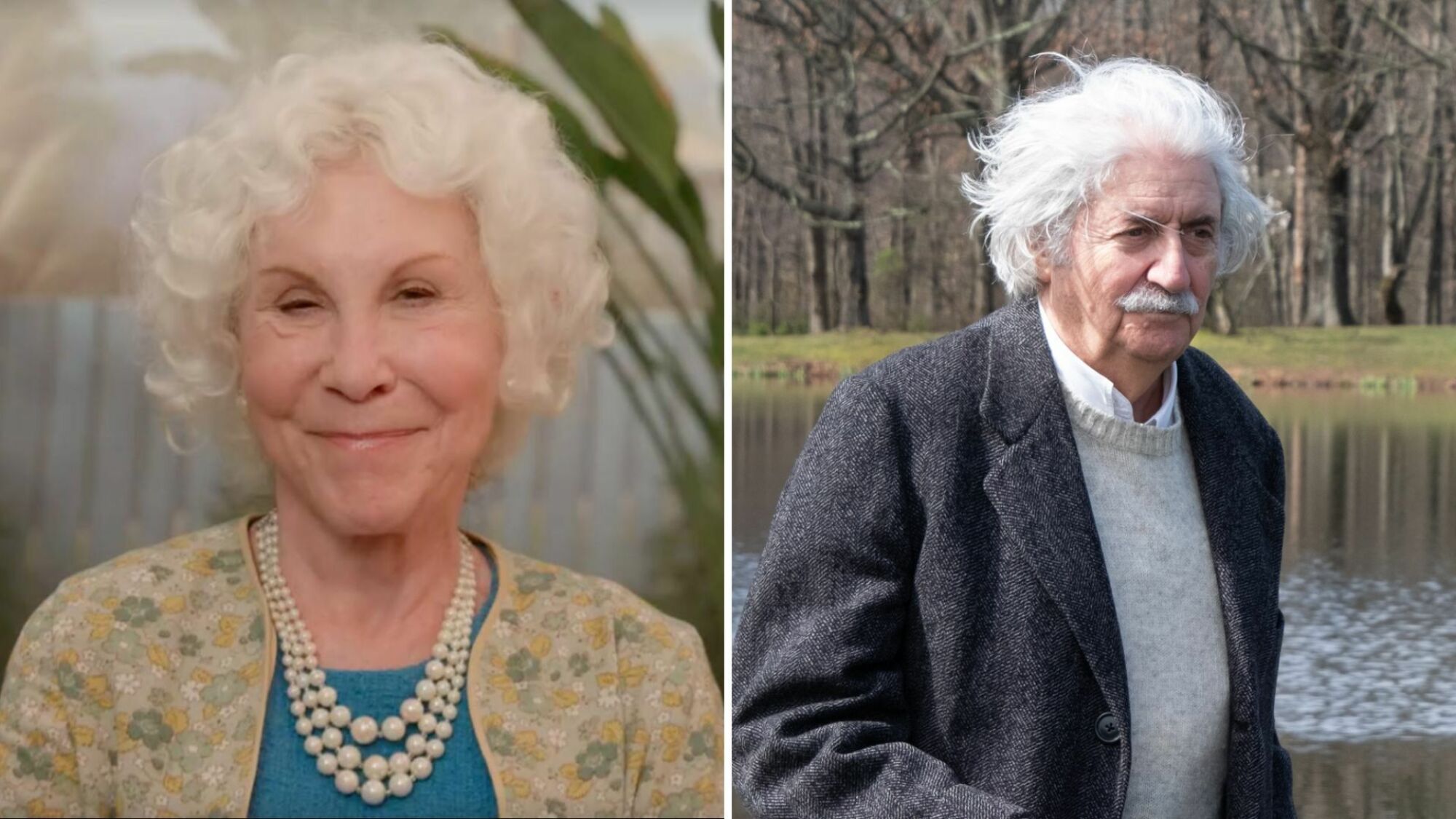
Both Barbie and Oppy need counsel in the final act of their films. For Oppenheimer, it’s Albert Einstein (Tom Conti), a friend and colleague in real life who could relate to the regret the movie’s protagonist was experiencing.
In Barbie, this mentor is the doll’s real-life inventor, Ruth Handler, played here by comedy icon Rhea Perlman. When Barbie is at a loss as to what her ending is supposed to be, it’s Ruth guides her to the possibilities. Like Einstein, she offers advice that is not easy to hear and is deeply impactful on the protagonist and their audience.
Barbie and Oppenheimer: Indie writers/directors with big studio budgets
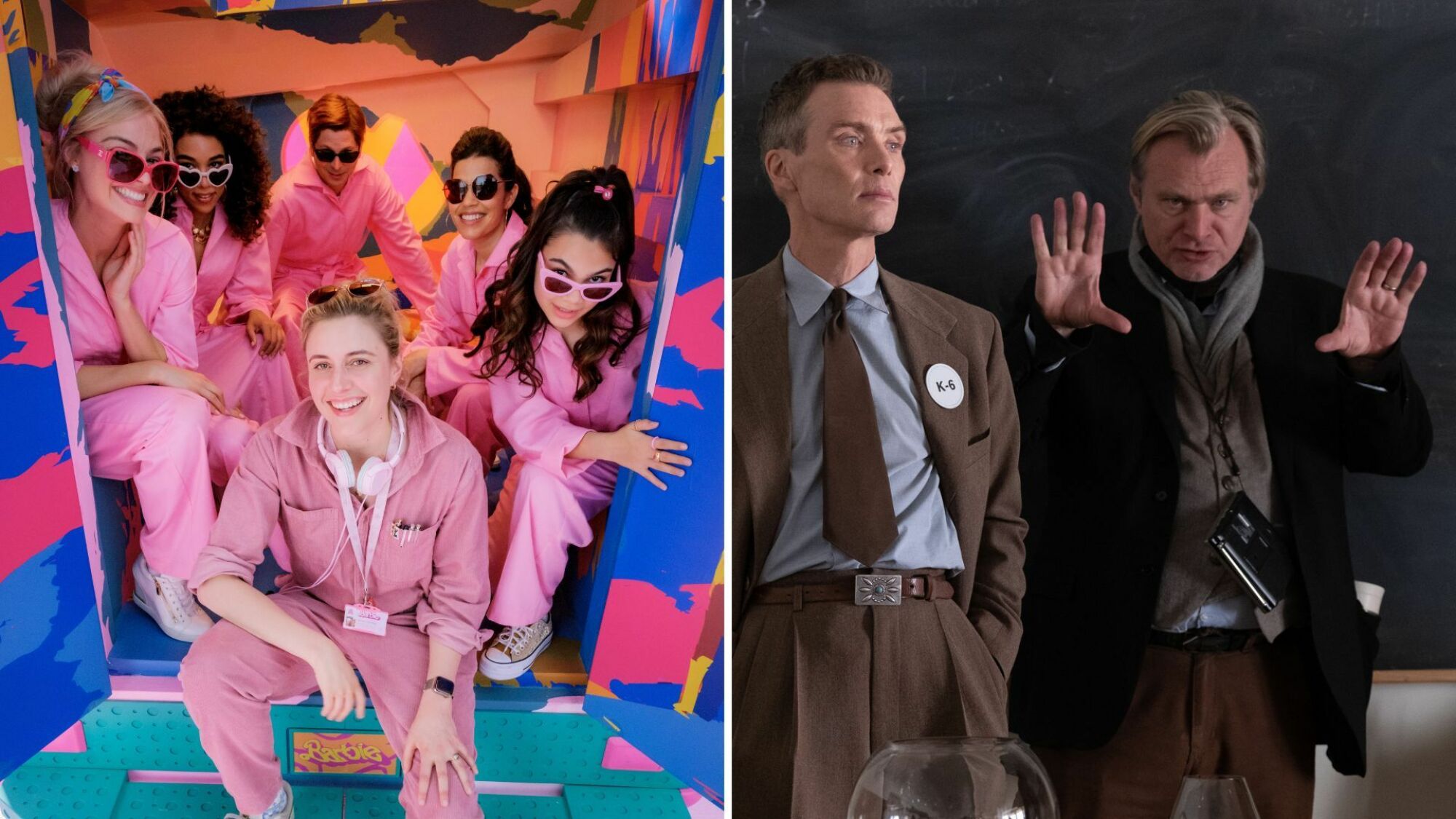
As the WGA and SAG/AFTRA are on strike nationwide to fight for better pay and better protections for creative workers in film and television, it’s important to remember that behind two of the summer’s biggest movies are two writers/directors who got their start in independent cinema.
In 1998, Christopher Nolan made his feature debut with the black-and-white thriller The Following, then broke through big time with its mind-bending follow-up Memento. Not long after, Nolan made the jump to a big studio production with name-brand IP with Batman Begins. His Dark Knight trilogy was not only a box office smash but is also credited with helping resurrect the superhero movie and shaping its emerging genre.
Gerwig began her career as an actress, appearing in “mumblecore” films like Hannah Takes the Stairs and Nights and Weekends, which she directed with Joe Swanberg in 2008. Nine years later, she struck out on her own, writing and helming the A24 release Ladybird, a critically adored coming-of-age dramedy that went on to earn five Academy Award nominations, including Best Picture. From there, Gerwig wrote and directed a studio adaptation of Louisa May Alcott’s classic novel Little Women, which scored six Oscar nominations, including Best Adapted Screenplay. Barbie is her biggest production yet, coming not only from a major studio but also boasting allusions to Hollywood classics, a sprawling world hand-built by craftspeople behind the scenes, and arriving in the heat of Summer Movie Season.
What does all this mean for Barbenheimer? Well, for one thing, whether you choose to see Barbie, Oppenheimer, or do both as a mind-rattling double feature, it’s a win for movies and a win for filmmakers who dare to dream big.
Barbie is now in theaters. Oppenheimer is now in theaters.
Additional reporting by Belen Edwards and Yasmeen Hamadeh.
